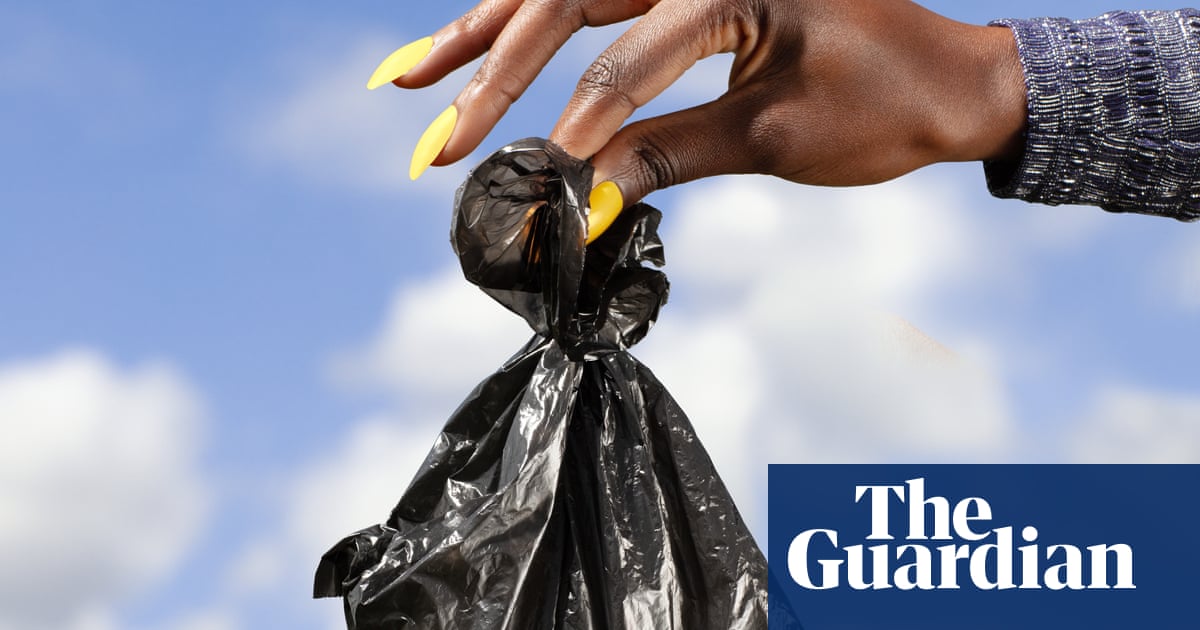When Laura Young got Cooper the cavapoo in 2020, she knew that single-use plastic poo bags weren’t going to cut it. “Having a dog is a lifestyle extra,” says the 28-year-old environmental scientist. “I was aware that I wanted to try not having a negative environmental impact.” But where to start? The shelves seemed to be divided into two camps: bog-standard, single-use plastic wisps, and shiny, expensive bags brandishing eco buzzwords. “I was conscious that compostable bags weren’t the solution,” says Young. “But initially that’s all I could find and so that’s what I bought.”
Often marketed as biodegradable, compostable or made from an alternative material such as cornstarch, they promise a more environmentally friendly option than single-use plastic. (Plastic poo bags, frequently made from low-density polyethylene, will sweat in landfill for thousands of years, breaking down into harmful microplastics and releasing climate-warming methane as they go.)
“You’ve got plastic bags, you’ve got recycled plastic bags, you’ve got compostable bags, you’ve got biodegradable bags,” says Young. “There are actually so many materials now that it’s confusing.” She’s not alone in puzzling over which to buy, with the nation’s dogs producing more than 1,000 tonnes of poo every day in the UK.
Compostable and biodegradable bags promise to break down in the right conditions but given that oxygen and light are needed for biodegradation to take place, these types of bags are rendered useless if binned and sent to landfill. Then there’s the danger that because they say biodegradable on their packaging, people won’t throw them in the bin in the first place. “People don’t clearly understand what buying a biodegradable bag means,” says Karl Williams, the director of the Centre forWasteManagement at the University of Central Lancashire. “There’s the risk that dog owners go: ‘Well, it’s OK now because it’s biodegradable, so I can leave it in the forest.’” The bags won’t biodegrade if just dumped out in the open, dog poo can contain harmful pathogens such as E coli and it is, for the record, littering.
Some even argue that the environmental impact of manufacturing these types of bags does more harm than your standard plastic fare. “When you do the life cycle assessment of the whole process, they’re actually worse because you’re using so much energy to make the bag in the first place,” says Mark Miodownik, professor of materials and society at UCL. “It’s a very small industry, and its small size basically makes it inefficient. You’re still using a lot of energy and water to make these bags, but you’re competing with the scale of the trillion dollar plastics industry, which does things much more efficiently per bag.”
It’s no wonder, then, that some dog owners are attempting to get rid of bags altogether. “In an ideal world, I kick the poo to the side,” says 55-year-old Lynda. “As long as it’s off the path, I think it’s going to decompose there better than being in any kind of bag.” Known as the stick and flick method, this type of dog waste disposal is controversial: a recent study from Belgium found that dog faeces and urine were being deposited in nature reserves at such a rate that it was overfertilising the soil and harming biodiversity. “Intuitively, you would think that nutrients are good for plants – adding nitrogen and phosphorus is something we do in agriculture and arable fields,” says Pieter De Frenne, professor of applied plant sciences at Ghent University, who led the study. “But only a subset of plant species can really take advantage of the additional nitrogen and phosphorus inputs.” As a result, many local flora will be driven out by thriving plants such as nettles and hogweed, reducing biodiversity. De Frenne advises against stick and flick in any ecosystem – whether you’re walking on or off the beaten track.
So what’s the solution? For Miodownik, it’s surprisingly straightforward: “If you’re going to put it in a municipal bin or your own bin, you’re better off trying to reuse a bag that you already have in your possession that would otherwise go in the rubbish. You give it a second life, and you’re not consuming resources by buying a bag.”
Dog walkers from across the country have come up with innovations of their own. Jacqueline Moore from Musselburgh fashions a folded sheet of newspaper into a parcel: “I can usually slide it under her while she poos.” While other intrepid owners have reported reusing everything from cereal bags to magazine postal pouches. As for Young, she’s settled on the best solution she could find: Scottish brand Project Harmless’s £15.50 bags that dissolve in water. That is, when she can’t find an old bread bag to use instead.
